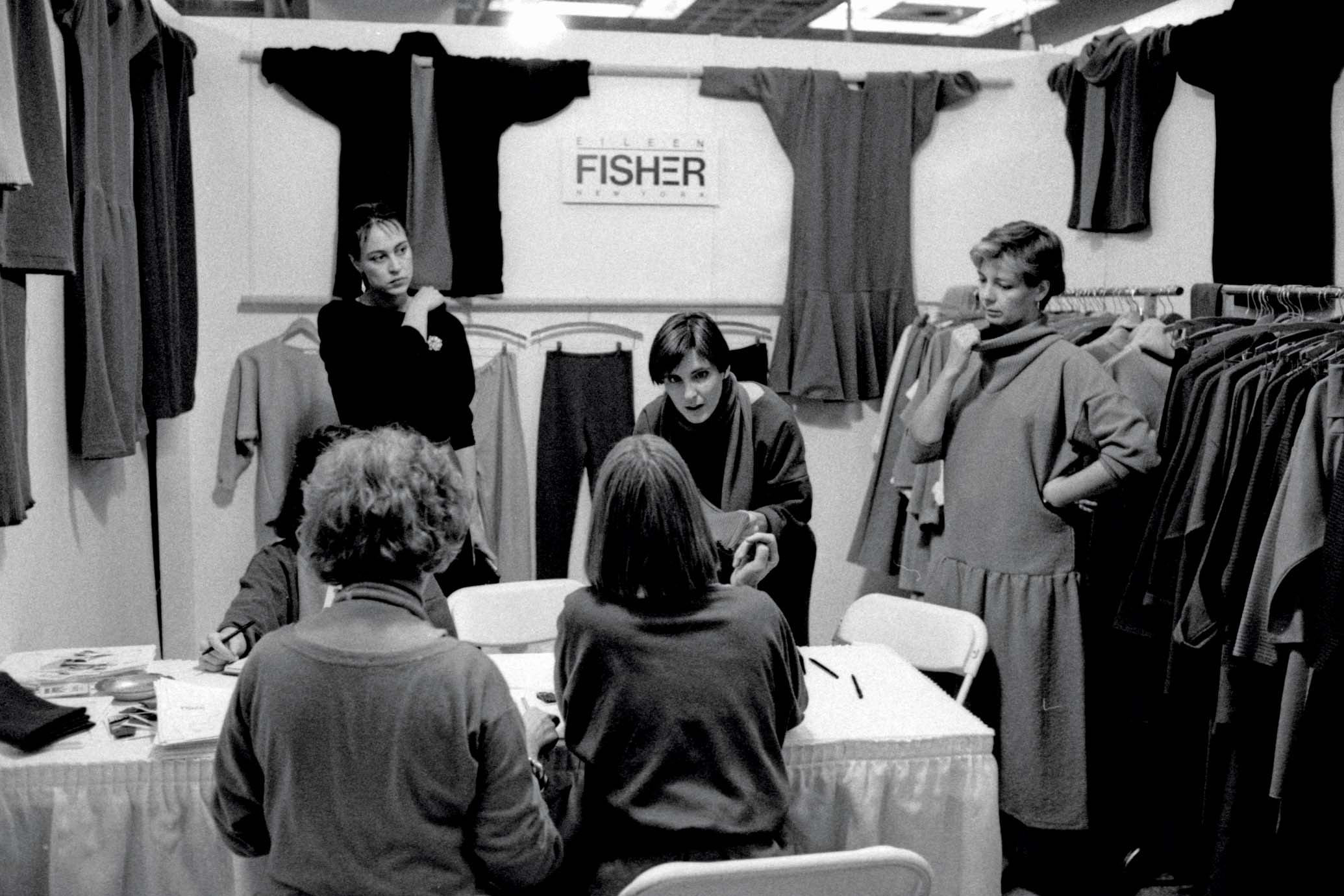
Recently my boyfriend and I compared our ideas of etiquette for crossing a street in New York City. His belief is that one must step into the street with intention, so that oncoming traffic will recognize that intention and consequently respect your right to cross. My approach is to make eye contact with the driver or bicyclist and maintain it as I proceed, so that we both acknowledge one another in a silent, mutual exchange.
It dawned on me that one could easily define these two responses as unequivocally gendered: the stereotypically male inclination for self- assertion versus the stereotypically female inclination for collaboration. But are these attitudes biologically inherent, or have they been bred, slowly, socially, over the course of millennia? At a certain point, is there even a difference?
These questions came to mind recently when I had the opportunity to interview one of the most successful female entrepreneurs today: Eileen Fisher. The clothing designer founded her namesake label in 1984, inspired initially by practical reasons. At the time, she was working as a graphic designer and interior decorator, with many clients in Japan, and needed to look the part for her meetings. This meant a simple, chic ensemble—something that would endow confidence but was also comfortable, functional and required less effort than was normally expected for a woman to invest in her appearance. She wanted the process of dressing to be as straightforward as throwing on a uniform, similar to her experience in Catholic school. Inspired by the refined, geometric shapes of Japanese garments such as the kimono, she cobbled together a four-piece collection and arranged to participate in a trade show with some friends in NYC. The first day didn’t go terribly well, and not because buyers weren’t interested. Eileen was so nervous that she couldn’t respond to their questions; she couldn’t speak at all, in fact. Her friends asked the buyers to come back the next day, which they did, and she secured 3,000 dollars’ worth of orders.
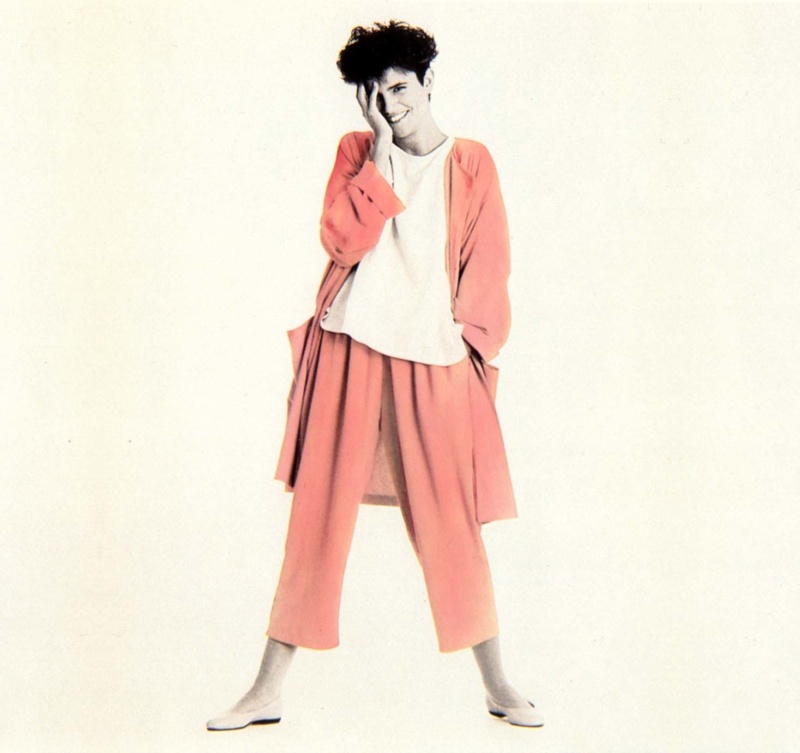
Many people told her that the clothing wouldn’t sell because it was too simple; boxy tops, comfortable trousers and loose-hanging jackets were some of her staples. At her second trade show, however, buyers were lined up out the door to place orders, this time in the total amount of 40,000 dollars. The immediate popularity of her work spoke to a gap in the market, especially for a growing demographic that was offered few options by the fashion industry: women in the workforce.
Power dressing wasn’t for everyone, and the minimalism of Calvin Klein and Donna Karan, while instrumental, still broadcast a sexier and more luxurious image than many women were comfortable with (or could afford). Very few womenswear brands existed that conveyed a sense of modernity and sophistication but were not trend-oriented. Eileen’s philosophy was aligned with a new kind of femininity whose goal was neither to camouflage women as men, nor to objectify their bodies through form-revealing silhouettes. These were clothes that acknowledged the waist, hips, legs and bust, but did not flaunt them. They were intended to make women feel at ease in their own bodies, assured that their appearance was chic and smart without needing to be fashionable. The brilliant cultural critic Glenn O’Brien stated in a 2011 interview that “fashion is about conformity, and style is about non-conformity.” Today, there is an unspoken compliance that is inferred by following trends involving body ideals, age ideals, race ideals, socioeconomic ideals and so on. Even fashion brands that champion underrepresented demographics are still functioning within this framework. Eileen’s brand is not immune to these forces, and her aesthetic is certainly unified. Yet, by appealing to a variety of body types as well as to timeless design and the longevity of the product, her clothes become more about individual sensibility.
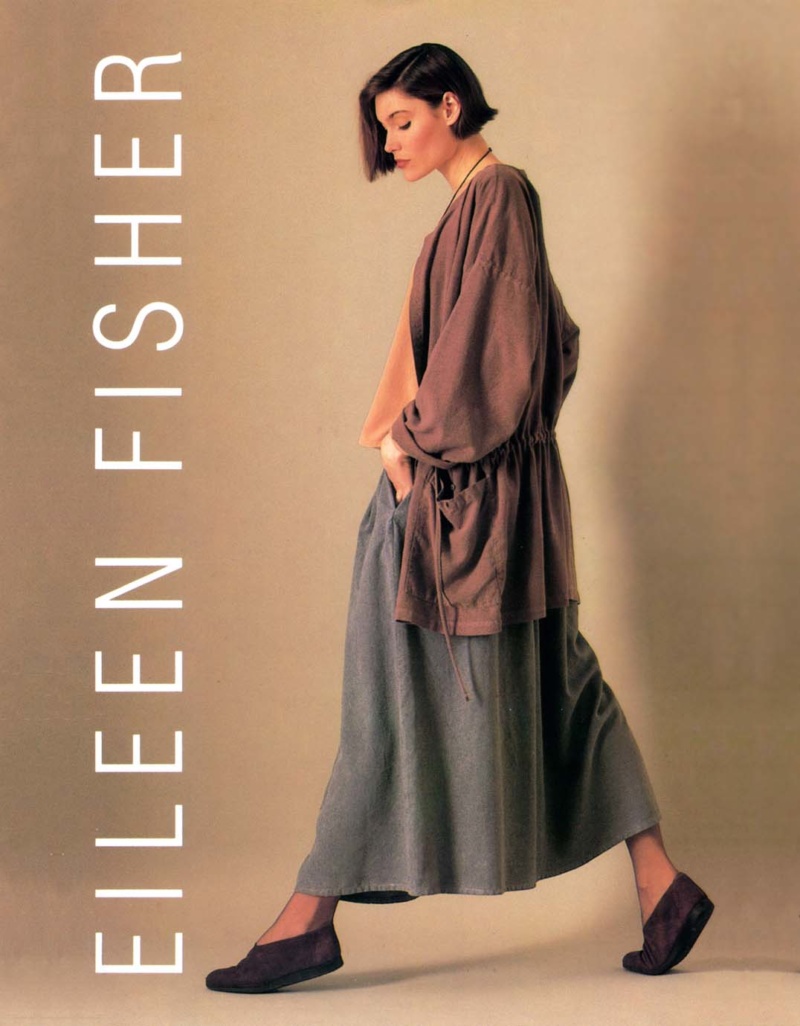
Our interview was conducted over the phone on a sunny day in February. I was tucked away in a warm studio in Bushwick, and Eileen was somewhere in Midtown near the West Side Highway. “The traffic outside is really loud,” she said. “Could you please speak up?”
As we spoke, it struck me how unlikely a candidate Eileen was for the role of fashion designer. For one thing, she seemed not to have lost much of the shyness that had prevented her from conversing with those buyers thirty-five years ago, and she’s surprisingly candid about her insecurities. She didn’t appear to have the sense of ego or opportunism that is so necessary for making it in the cut-throat rag trade. I was also surprised by her humility, as she often referred to how instrumental her colleagues and staff are to the company’s success. Her priorities are remarkably equitable in terms of environmental concerns as well (most brands employ sustainability promises purely for marketing reasons). Her clothing is designed and manufactured to last decades and recycled into new items once they are no longer wearable (her initiative Waste No More addresses this with unrivaled efficacy). She waxes lyrical about natural fibers: “Even the scraps are worth saving because the integrity of those fabrics is so incredible. In their third life, they make the most beautiful things!”

Despite these ostensible shortcomings for the career of an entrepreneur (humility and equity), her business has been wildly successful. This begs the question: were her achievements accomplished in spite of these things, or because of them?
On the phone, Eileen made frequent self-deprecating remarks about the meandering tone of her responses and she worried that she wasn’t being clear, or that her feedback wouldn’t be useful. It was nice to speak with someone who was so sensitive to my questions, to the goal of the interview and even to the quality of our communication. On more than one occasion she asked me about my own experiences and opinions, and commented thoughtfully on my answers. A mentor once told me to wait until an interview subject had finished speaking, and then to wait a bit more: thoughts have a way of bubbling up to the surface at the last minute, and this patience often rewards you with more profound responses. Instead, however, an idea in the form of a question came to my own mind: “What is the importance of listening?”
“You learn what you don’t know! When you’re the one talking, you’re only learning what you know. Listening expands what you know, and it expands what is possible,” she says.
Perhaps when we shed the desire for authority, we’re able to see things more clearly. Practicality can be confounding—and evidently quite profitable too.
So what does this business actually look like, helmed by an extremely shy woman whose priorities include listening to others, questioning her own opinion and judgement and admitting publicly to her insecurities?
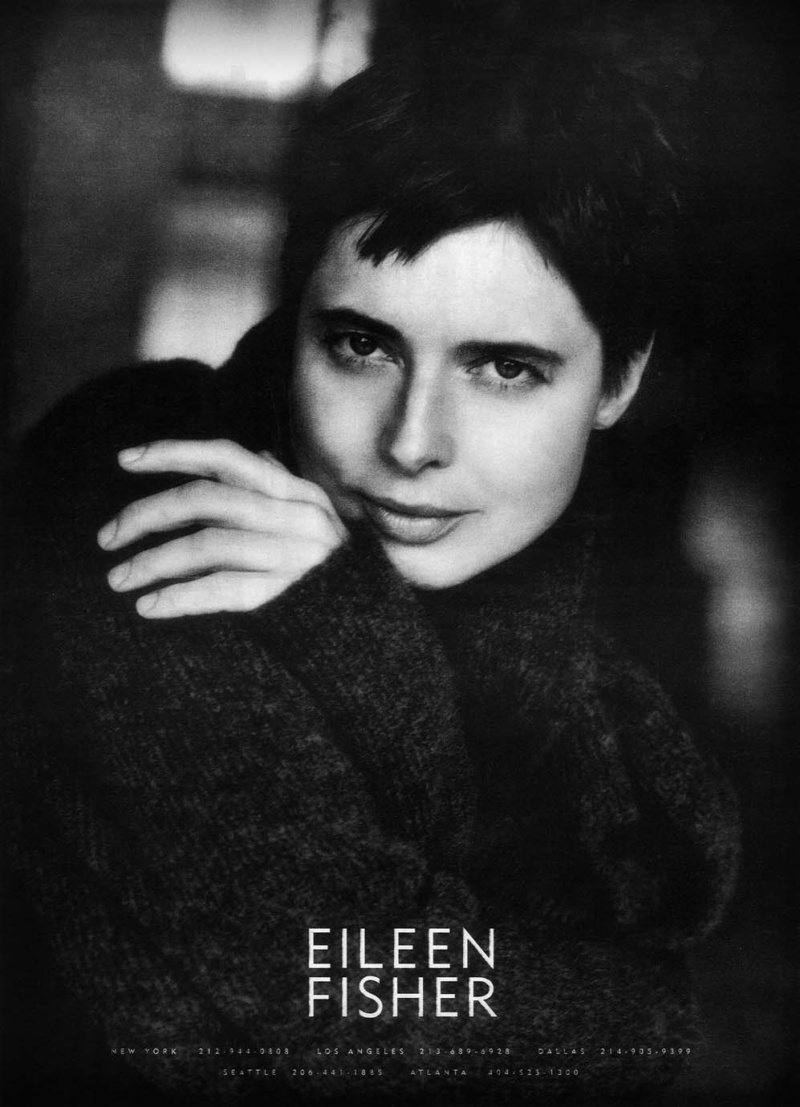
Today, the company reaps approximately 500 million dollars in sales. There are sixty Eileen Fisher stores globally and the staff numbers around 1,200 (another 10,000 makes up their manufacturing demographic). The majority of people who work at the company are women. Eileen has retained sixty percent ownership of the business she founded (something most designers this far into their careers cannot boast), but the remaining forty percent isn’t owned by an investment firm or corporate conglomerate: it’s owned by her employees. In a New York Times interview from 2018, she explained the rationale: “I’m really convinced that it works for the business. It engages people and their sense of ownership… They’ll say in a meeting, ‘Don’t spend my money on that.’”
As much as my interest tends to gravitate towards a designer’s creative philosophy, I’m utterly fascinated by her business model. I kept trying to imagine a representative shape to describe the Eileen Fisher power structure, since the immutable pyramid seems hardly applicable. The best I could land on was a slinky: ideas and questions are shot round in a spiraling circle between Eileen and her staff, oscillating and transferring energy until somewhere down the line, a decision is made. “Certainly there’s some hierarchy, because at the end of the day someone has to take responsibility,” Eileen tells me. But when a call is made, it’s generally not the result of one individual’s opinion: “Oftentimes it’s a small team of two to three people who are making decisions together.”
She’s quick to explain that this is by no means an easy approach. “It’s something that needs to be constantly thought about. How does this structure work? What are we actually trying to do? Who’s in charge?! It’s the eternal question at the company!” she laughs.
“We’ve also struggled, as we’ve got bigger, with the need for more clarity, more definition of roles. It can be quite cumbersome and confusing, especially for new people. We’re trying hard to create order from the chaos.”
“Maybe constant questioning isn’t such a bad thing,” I chime in. Communication is key, after all.
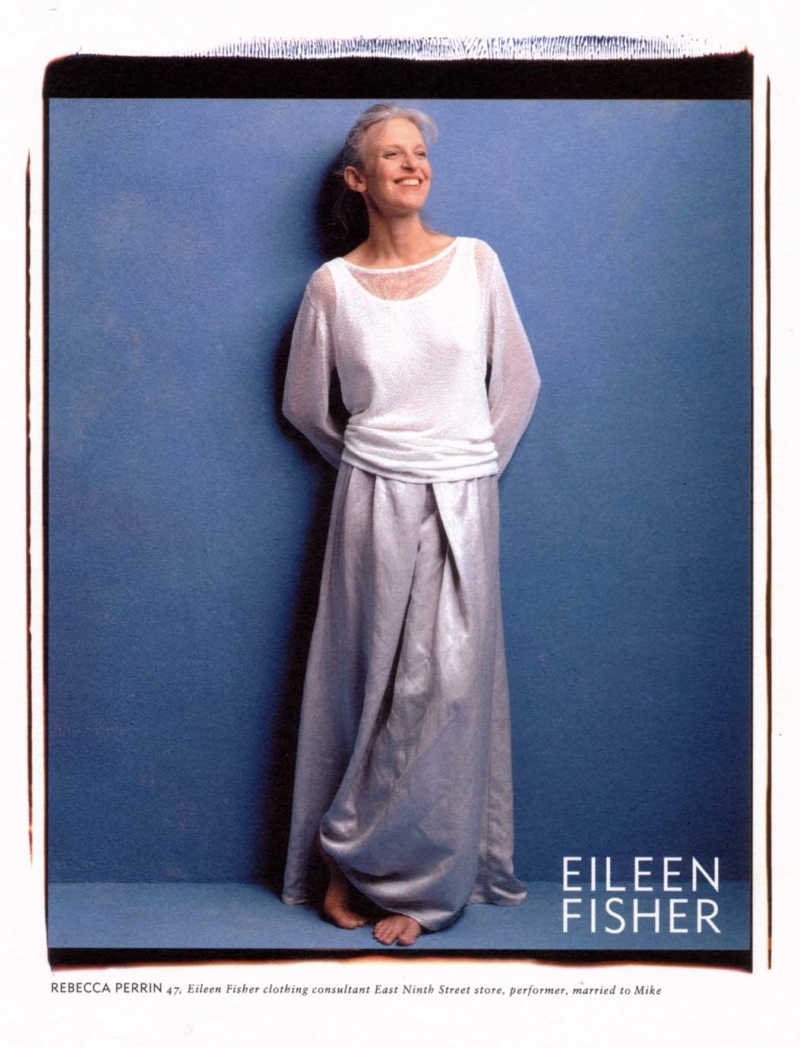
Journalists have often pointedly detailed the difficulty Eileen has with explaining her business approach, sometimes even characterizing it as evasive or flighty. Usually the logic of these profiles follows that of a “success-despite-the-odds” story, the “odds” more or less referring to her inability to draw clear lines around her business practices. This judgement misses a greater point: the price of a business that champions the collective over a single authority might inevitably entail an amorphous disposition, due to the degree of constant flux. It’s something we’re just not used to envisioning or discussing—yet.
Is it fair to say that the Eileen Fisher approach to business is categorically “feminine”? That the circular business model and the emphasis on equity for employees as well as environmental concerns are aligned with the traits that characterize women in Western society? The criticisms of her amorphous disposition and lack of clear explanations could certainly be considered proof of this.

“I do think [women] do things in a more collaborative and inclusive way. Listening and connecting, bouncing ideas off each other, those kinds of things. There’s a wonderful man who works for us and he told me that when he first started at the company, he was shocked because people don’t interrupt each other! I think it’s because it’s women’s culture. We let each other speak,” she says, before adding, “I think we’re used to being talked over.” The results of this method certainly speak for themselves, regardless of how you categorize it. “It’s how we get to better solutions.”
I ask her which designer, of any genre and time, has most influenced her. “Bauhaus,” she says. “The whole philosophy— the idea that it was a collective of people working together—and the aesthetic.” This might feel like an obvious response coming from a minimalist, but there’s more to it than the similarities in communication and simple, refined design.
There are those people, few and far between, who manage to ignore the strictures delineating practice from ideology. Bauhaus, specifically personified by its founder Walter Gropius, represented this navigation between utopian ideals and entrenched practicality. Eileen also has this rare ability to mediate fluidly these purportedly conflicting tendencies—to perceive that, while far from harmonious, they need not be mutually exclusive. The constantly shifting dialogue at the brand may appear unproductive, even irresponsible, yet without this quality it might cease to maintain its balance. Gropius’s tenure didn’t last, but Eileen’s has.










 in your life?
in your life?

